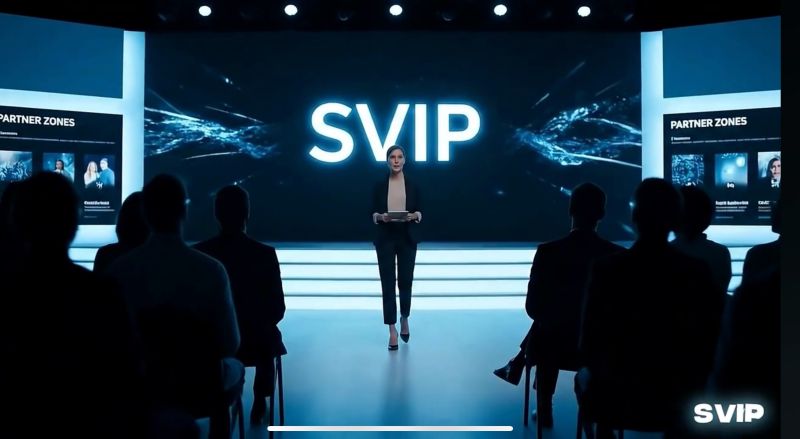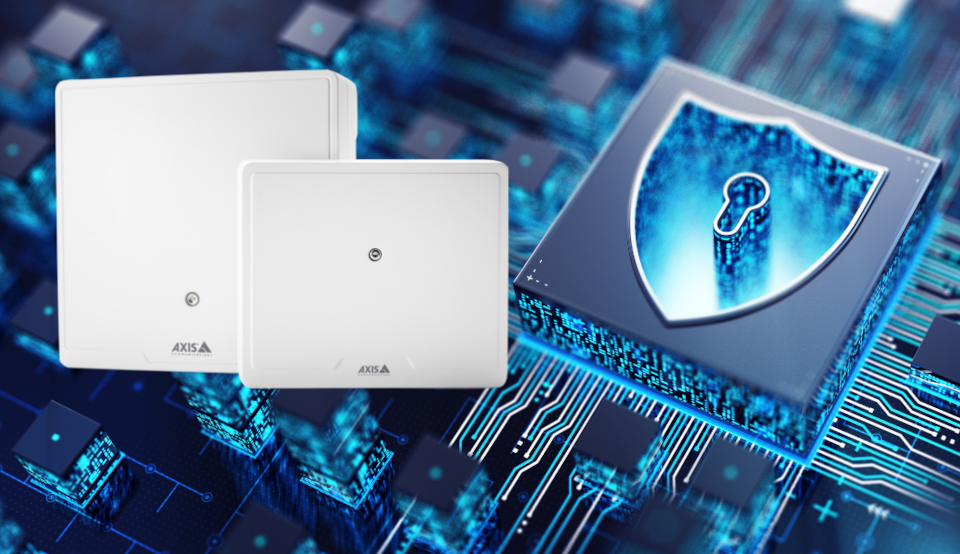You have no items in your shopping cart.
Case Study
Oct 3rd, 2022
The Campus that Threw Away the Keys
How the Switch to Electronic Access Control Vastly Improved Safety at Saddleback College

What epiphany drove a successful and growing school like Saddleback Community College to invest in upgrading nearly every lock on their 1400 openings to an electronic access control solution? The catalyst was two-fold. First, it was the realization that issuing and tracking nearly a thousand brass keys had clearly become riskier and much more cumbersome. But foremost, it was critical to bring door access security up to a higher level that would help streamline emergency responses.
Some people assume community colleges are typically small. Saddleback is anything but. The school’s 700,000 square-foot campus in South Orange County spreads across 200 acres and hosts nearly 25,000 students each term on their way to earning associate degrees offered in 170 different programs. Count part-time enrollees, specialty classes, events, and childcare, and the number of people on campus doubles or triples. To better cover that much ground and protect such a large student body more efficiently, Saddleback’s campus police needed greater visibility into door access activity, so it could determine how to best respond to urgent situations.
“But it actually wasn’t our department that was the driving force behind the movement to electronic access control,” says Lieutenant Mike Betzler of the Saddleback College Police Department. “It was a top-down initiative from the start. Tod Burnett was president of the college at the time and had been a former emergency manager under Governor Schwarzenegger. He set the bar. And former VP of Administrative Services Carol Hilton was instrumental in supporting the retrofit phase for replacing the hundreds of old locks around campus. But the real driving force early on was faculty and staff.” But the real driving force early on was faculty and staff.”
Betzler adds that anyone can visit the campus during our regular hours, regardless if it’s for official business or someone out on a pleasant walk around the grounds. Occasionally, a safety issue comes up. “Faculty and staff personnel were concerned about that and wanted the ability to be proactive in the event of a violent act at the school,” explained Betzler. “They wanted a solution that would allow them to quickly lock a classroom from inside if necessary and a way to quickly alert central dispatch.”
You might think the school’s idyllic location in Mission Viejo makes it far less likely to be a target. While the area is considered one of California’s best places to live, that doesn’t mean it’s immune in today’s world. This unfortunate reality prompted the leadership of Saddleback’s campus police department (PD), IT team, and facility and maintenance operations (FMO) to meet with faculty and staff to assess the situation.
Betzler says, “We learned a lot over the four-plus months of discovery and analysis with the campus team and through consultation with IMRON, our security management software provider, and ASSA ABLOY. We also visited other schools that had successful access control systems in place. We heard about community colleges out there in rougher areas where bulletproof glass and high fences are part of the solution, but this is not that campus. We didn’t need to go that far. Saddleback needed to remain an inviting place.
“We already had a high quality and effective video camera system in place, so that was a good jumping-off point. One of the reasons we went with IMRON was their ability to integrate access control with Video Insight. It’s a very powerful combination that provides a deeper level of situational awareness for our department.”


Chin Leung, Senior Software Engineer at IMRON Corporation adds, “From the facility management perspective, FMO spelled out how difficult it was to keep up with issuing and retrieving traditional keys as personnel changed, which meant frequent rekeying of a whole lot of doors and increased concerns about the responsible use of those keys as well as the security of the areas they accessed.”
Leung explained how Jim Rogers, the FMO director at the time, relayed how it had become impossible to manage every key. Rogers also felt that along with implementing an access control solution to switch from physical keys to card credentials, the system needed to be managed from a centralized system. That way, PD could easily issue and revoke access on a semester-by-semester basis or whenever it would be necessary to change someone’s status.
He says IT was integral to the discussion because their team would be the one responsible for setting up the IMRON integrated system that ties everything together. They’re also charged with daily monitoring and maintenance of the hardware, on-premise web servers, and software performance
Why PoE
After an extensive assessment based on consultations with the school’s various department deans, Saddleback PD, FMO, and IT leadership made the decision to standardize on ASSA ABLOY PoE electronic access control lock hardware integrated with IMRON’s web platform and software solution. “PD wanted the instant feedback capabilities that PoE provides,” explains Leung. “PoE locks are always online ready to provide continuous door and lock status as well as an audit trail to confirm authorized user access. That informs better overall security decision-making and also makes it possible to react more immediate when a critical situation arises and every second counts.”
Saddleback implemented the first phase of their long-term access control installation plan five years ago during construction of the college’s new science buildings complex. To kick off the transition, they specified more than 160 PoE locks from ASSA ABLOY Group brand Corbin Russwin featuring the Access 700 PIP1 intelligent lockset that uses magstripe, PIN code and HID Global’s multiclass SE card reader technologies for access control.

Since then, the college has switched to ASSA ABLOY’s SARGENT IN220 PoE solution for retrofitting existing openings as well as new construction installations since there is no longer a need for the PIN pad and magstripe options. The choice was easy since both the Corbin Russwin and SARGENT units are totally compatible with IMRON’s access control solution; the cards that work on the original units in the science buildings work equally well on the IN220s.
Redrock Technologies, Inc. was the partner that installed the physical EAC lock hardware for both the original and upgrade phases. Retrofitting hundreds of locks in Saddleback’s older concrete interiors was quite challenging compared to new construction. Even though PoE only requires a single wire, that still meant running conduit and hundreds of wires through those surfaces. “Drywall would have been easy,” says Leung. “Concrete walls are another story. And IT also had to expand the number of IT closets to extend the electronic reach. At the end of the day, though, it was a very successful and well-planned installation process despite the temporary obstacles.”
Creative Use of an IN220 Feature

One of the selling points of the SARGENT IN220 lock was a button originally designed for someone to lock the door from inside for privacy. “But Saddleback had a better idea for that feature,” says Leung. “Use it as a panic button instead. So, we configured it to do just that. This required staff to be instructed to only push the button when they felt there was a concern for the safety of those in the room. This safeguards against having to go out into a hallway to lock the door that would risk exposure to danger.”
The panic button not only locks the door immediately, but also sends an instant alarm to the dispatch center. When that happens, Betzler says, “We dispatch a uniformed police officer as our initial response and then call to see if we can resolve the situation by phone.”
“A graphical map on the UI also pins the location of the alarm so the dispatcher can readily identify where it was activated,” adds Leung. “If a cluster of alarms appears in proximity to each other, it’s likely there’s a dangerous event underway, which would prompt an authorized supervisor to issue a command to lockdown the building or the entire campus remotely. Once locked down, only campus police with a VIP credential can gain access.” Note: Per code, the ability to open an access-controlled door from inside a room is always possible when egress is necessary.
“Another thing staff and faculty told us was the system had to be simple and easy to use for everybody involved, and it is,” says Betzler. “It couldn't require a bunch of training. We opted for cards even though we know some schools have moved to mobile credentials due to student demand. But since access control is almost entirely confined to staff and faculty, cards are more logical for Saddleback.”
He adds, “When I go out and speak about electronic access control around the nation, typically people are staying in hotels at these conferences. I tell them our system basically operates very similar to what you would encounter in any modern hotel room with electronic access control. It’s that simple.”
IMRON Puts Access Control Visibility in the Driver’s Seat
Another advancement that’s ready for deployment is IMRON’s web UI that an officer can access and monitor from their patrol car laptop. “This is particularly valuable at night or during times when a single patrol is making its rounds and no dispatcher is on duty,” says Leung. “So, if something happens on the other end of the campus, the officer can head over to the location quickly and investigate it, and if necessary, call in other departments for backup.”

Dividing Up Access Control Duties
Leung says responsibilities for managing setup, credentials and maintenance are very well divided at Saddleback College. “IT sets the access levels for the openings and does a significant portion of the setup programming to help supplement PD manpower. IT also maintains the on-premise web server(s) and monitors access control software performance.
“PD issues and manages access credentials and is the primary day-to-day user monitoring activity from the dispatch center where IMRON’s user interface displays a steady stream of access events scrolling by in real time,” explains Leung. “And FMO focuses on inspecting the doors and hardware to ensure everything is functioning properly – mechanical components like door closers, latches, levers and electro-mechanical hardware such as automatic doors, electric strikes, card readers – essentially any onsite door, door frame and door hardware issues.”
Any cause for alarm pops up on the campus police department’s screen in real time, alerting the dispatcher to quickly ascertain the situation and immediately send a patrol to respond and investigate, or, if necessary, lockdown or lockout that location remotely, limiting access to authorized campus police officers. Likewise, if an authorized user calls the dispatch center to report they forgot their access card, for example, PD can still unlock a door remotely once they confirm the identity of that person.
Betzler sums it up this way: “Overall, Saddleback’s electronic access control system has become a real timesaver and has freed up officers from having to go around locking/unlocking doors manually. They’re able to focus on other security functions around campus. And, of course, it has helped accelerate our response time when it’s called for. Access control has really made Saddleback a lot safer, and that added sense of security makes for a more conducive learning environment.”







